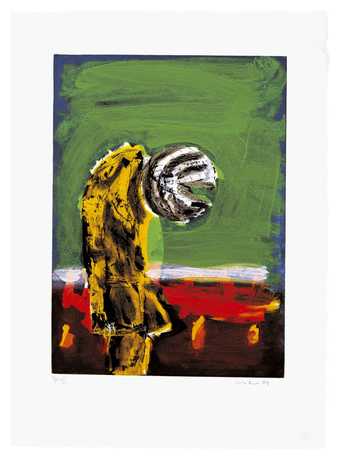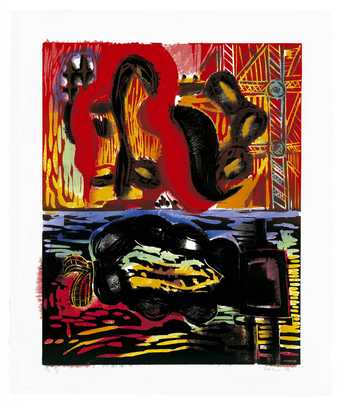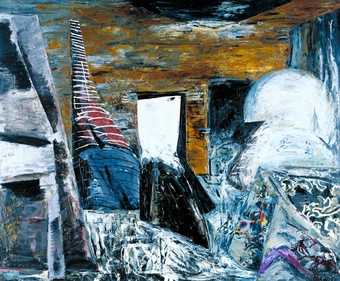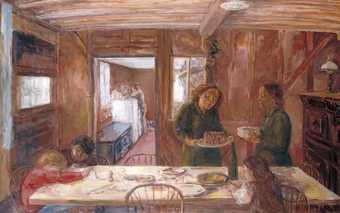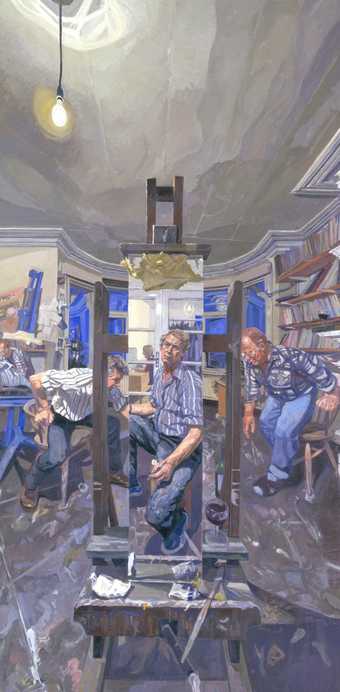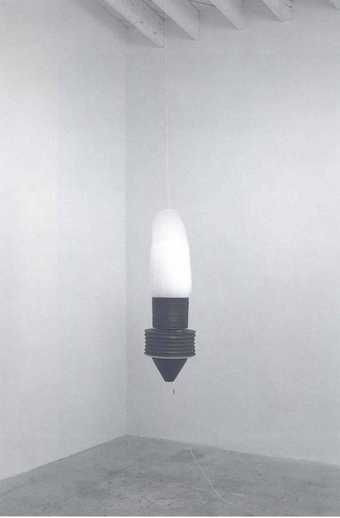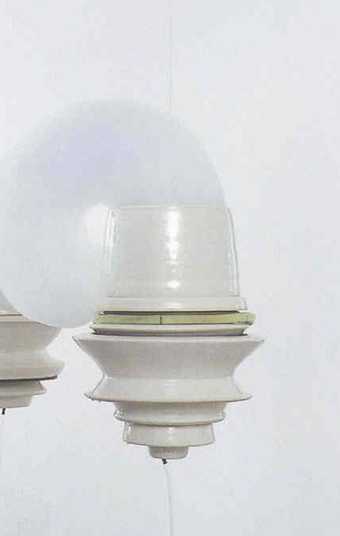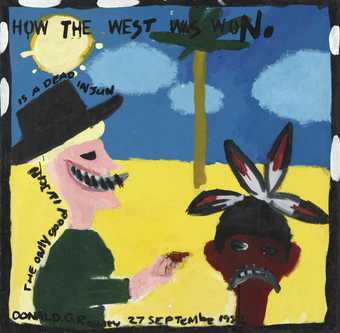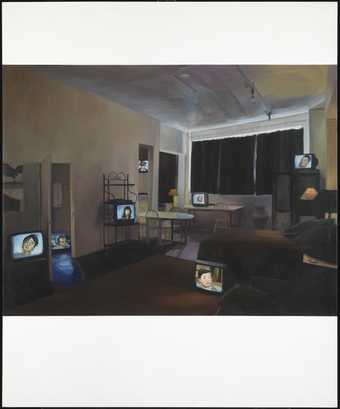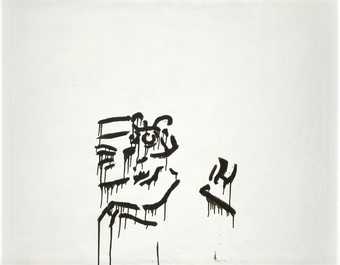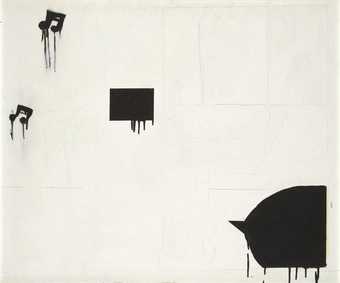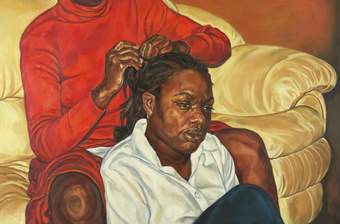Sorry, no image available
Not on display
- Artist
- Hurvin Anderson born 1965
- Medium
- Oil paint on canvas
- Dimensions
- Support: 2503 × 2083 mm
- Collection
- Tate
- Acquisition
- Purchased using funds provided by the 2008 Outset / Frieze Art Fair Fund to benefit the Tate Collection 2009
- Reference
- T12889
Summary
Anderson applies oil paint in a variety of consistencies, ranging from thin washes, which seep into one another, to areas of more evenly applied and thicker paint. Writing about Anderson’s use of oil paint, the critic Martin Herbert has observed:
Anderson’s art with its deliberate surface thinness, most closely shadows the 1970s works of Michael Andrews, another British painter who used his medium’s slippages to signify what he felt about a subject, and who tended to let his iconography melt outward from a tight Photorealist core, as if drifting inexorably into the fault zone of memory.
(Martin Herbert, ‘Hurvin Anderson: New Paintings’, Artforum, vol.44, no.2, October 2005, pp.287–8.)
Anderson’s paintings are generally derived from photographs that he has taken of a subject. He assembles these images to create collages that form the basis of his compositions. As critic Edward Caughlin has observed, Anderson is ‘interested in the distance that working from photographs affords him ... [It is] partly through this process that personal memory and perception enter the works.’ (Caughlin, [p.1].)
Anderson usually explores and reformulates different elements of the same subject across a number of drawings and paintings. The barbershop shown in Jersey, for example, has featured in a number of compositions, including Barbershop 2006 and Flat Tops 2008 (both Thomas Dane Gallery, London). Alongside this series, Anderson has also developed Peter’s Series 2007–8 (reproduced in Hurvin Anderson: Peter’s Series 2007–9, exhibition catalogue, Tate Britain, London 2009), a group of paintings and drawings exploring a single image of a make-shift barbershop in a private home. This series documents the arrival of Caribbean immigrants in Britain during the 1950s and 1960s, when barbershops were opened in people’s homes and served as social gathering spaces.
Further reading:
Hurvin Anderson: A View of the Rio Cobre, exhibition catalogue, Dulwich Picture Gallery, London 2006.
Edward Caughlin, ‘Hurvin Anderson: Meeting Points’, Hurvin Anderson: New Paintings, exhibition catalogue, Thomas Dane Gallery, London 2005.
Carmen Juliá
May 2010
Does this text contain inaccurate information or language that you feel we should improve or change? We would like to hear from you.
Display caption
Jersey depicts the interior of a barbershop in Kingsland, Jamaica. Anderson was born in the UK to parents of West Indian descent. His paintings evoke a sense of, as he puts it, ‘being in one place but thinking about another’. While the photographic sources provide a degree of distance, the process of compiling the image allows for a play of memory and perception, and a shift of register between representation and abstraction.
Gallery label, September 2016
Does this text contain inaccurate information or language that you feel we should improve or change? We would like to hear from you.
Film and audio
Explore
- interiors(2,776)
- electrical appliances(404)
-
- razor(4)
- chair(915)
- light / lamp(264)
- poster(874)
- bottle(289)
- cities, towns, villages (non-UK)(13,323)
-
- Kingsland(1)
- Jamaica(78)
- lifestyle and culture(10,247)
-
- cultural identity(7,943)
You might like
-
John Walker The Witness
1999 -
John Walker Mount Kisco Studio
1996 -
John Walker Labyrinth III
1979–80 -
John Lessore Sunday
1985–9 -
John Wonnacott Studio Conversation I
1993–4 -
Paul Winstanley TV Room V
1997 -
Roger Hiorns Untitled
2005 -
Roger Hiorns Untitled
2005 -
Roger Hiorns Untitled
2005 -
Roger Hiorns Untitled
2005 -
Donald Rodney How the West was Won
1982 -
Sandra Gamarra Page 70
2006 -
Donald Rodney Black Comedy 1
1997 -
Donald Rodney Black Comedy 2
1997 -
Barbara Walker The Sitter
2002


